Today’s Current Affairs: 11th September 2025 for UPSC IAS exams, State PSC exams, SSC CGL, State SSC, RRB, Railways, Banking Exam & IBPS, etc
Table of Contents
Employees’ State Insurance Corporation (ESIC) Initiatives:
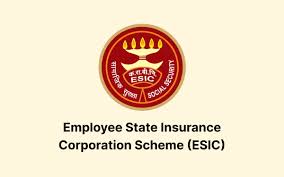
In a significant step towards strengthening the social security framework and simplifying compliance for industries, the Employees’ State Insurance Corporation (ESIC) recently launched two major initiatives — SPREE-2025 and the AMNESTY Scheme-2025.
- The SPREE-2025 (Scheme for Promoting Registration of Employers and Employees) will remain operational till 31st December 2025.
- Under this scheme, industries and employees who are not yet associated with ESIC can register through the ESI Portal, Shram Suvidha Portal, and Company Affairs Portal without the demand of old dues.
- Employers registering under SPREE-2025 will be considered covered from the date of their registration or the date declared by them, and newly registered employees will start receiving ESI health and social security benefits from the date of registration
- The focus of this scheme is on voluntary compliance rather than punitive measures, as it seeks to reduce litigation, encourage formal registration, and foster a climate of mutual trust and cooperation between employers and employees.
- AMNESTY Scheme-2025 will be in effect from 1st October 2025 to 30th September 2026.
- This one-time dispute resolution initiative has been designed to settle issues related to damages, interest, and coverage under the ESI Act.
- The scheme seeks to provide employers with an opportunity to resolve pending disputes and strengthen compliance, thereby reducing the number of lawsuits and ensuring the smooth delivery of social security benefits to employees.
- Under the scheme, the regional directors have been empowered to withdraw cases where contributions and interest have been paid, and also to withdraw cases filed against insured persons over five years ago where no notices were issued.
Swachh Vayu Survekshan (SVS) 2025:
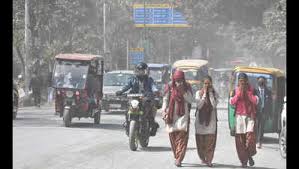
Indore, India’s cleanest city, topped the ‘Swachh Vayu Survekshan 2025’ for air pollution mitigation, despite a slight PM10 increase.
- SVS is an annual survey conducted by the Ministry of Environment, Forest and Climate Change (MoEFCC) under the National Clean Air Programme (NCAP).
- It is structured as a rigorous, multi-tiered evaluation mechanism, founded on comprehensive due diligence under the NCAP.
- The programme is conducted annually for 130 cities under NCAP to promote healthy competition among cities and encourage them to take expeditious actions to improve air quality.
- The SVS assesses cities on eight key parameters, including road dust mitigation, solid waste management, vehicular and industrial emission control, C&D waste handling, and public awareness, as well as measurable improvements in particulate matter levels.
- Highlights of SVS 2025:
- Indore topped the list of million-plus-population cities in the SVS 2025. Jabalpur and Agra/Surat followed.
- It has put Navi Mumbai at 4th position, Kanpur at 5th, Bhopal at 6th, Allahabad at 7th, Chandigarh at 8th, Ahmedabad, Pune, and Nagpur at
- 10th, Varanasi and Raipur at 11th, Lucknow at 15th, Hyderabad at 22nd, Mumbai at 25th, Jaipur at 26th, Delhi at 32nd, Bengaluru at 36th, Kolkata at 38th, and Chennai at 41st in the list of million-plus-population cities.
- Amravati secured first rank in the 3-10 lakh population category, followed by Jhansi and Moradabad (joint second rank) and Alwar (third rank).
- In the third category of cities (population under 3 lakh), Dewas (MP) secured first rank, followed by Parwanoo (Himachal Pradesh) and Angul (Odisha).
- PM10 levels went down in 103 out of the 130 cities under NCAP.
- Mumbai registered the highest decline of 44% in PM10 level in 2024-25 compared to 2017-18. It was followed by Kolkata (37%), Hyderabad and Bengaluru (26% each), Delhi (15%), and Chennai (12%) among the six big metro cities.
- Though a total of 22 out of the 130 cities have met the national ambient air quality standards (NAAQS) by reporting annual average PM10 concentrations of less than 60 micrograms per cubic metre (μg/m3), Chennai is the only big metro that met the acceptable limit, recording an annual average of 58 μg/m3.
Cross River Gorilla:
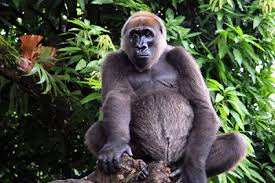
Deep within the Nigeria-Cameroon border’s misty mountains, the critically endangered Cross River gorilla struggles for survival, with fewer than 300 individuals remaining.
- Cross River Gorilla is a subspecies of the western gorilla.
- Scientific Name: Gorilla gorilla diehli
- With fewer than 300 individuals estimated to exist in the wild, it is the most endangered of the gorilla subspecies.
- They are the most endangered primate in Africa.
- Cross River gorillas are scattered in at least 11 groups across the rugged, hilly terrain that straddles the Nigeria-Cameroon border on the African continent, known as the Cross-Sanaga-Bioko Coast Forest ecoregion.
- These gorillas have brownish-grey or black fur. However, the face, hands, and feet have no fur at all.
- They have cone-shaped heads, above which rests a reddish crest.
- Adult males sport a silvery swath of hair down the center of their backs, a notable feature they share with all adult male gorillas, earning them the descriptive nickname “silverback.”
- These gorillas are very social and usually live in groups of 2 to 20.
- They are herbivores and usually feed on branches, nuts, leaves, and berries that they hunt for from different plants.
- Conservation Status: IUCN Red List: ‘Critically Endangered’.
Iskander-K:
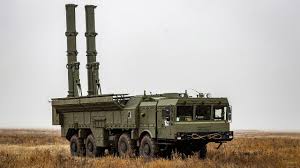
Russia struck Ukraine’s Cabinet building with an Iskander-K missile recently.
- Iskander-K is a Russian-made mobile short-range cruise missile launcher vehicle based on an 8×8 military truck chassis.
- The design of the Iskander-K is very similar to the Iskander-M, which is a ballistic missile launcher vehicle.
- The Iskander-K, also referred to as SSC-8, entered service with the Russian Armed Forces in February 2017.
- It is designed to perform tactical-operational strikes.
- For the Iskander-K, the vehicle can be fitted with two to six container launcher units.
- The truck launcher can run at a maximum road speed of 70 km/h with a maximum cruising range of 1,000 km.
- The Iskander-K can launch two types of cruise missiles, including the 9M728 (SSC-X-7), also known as the R-500 and the 9M729 (SSC-X-8), a new long-range missile.
- The 9M728 cruise missile has a maximum firing range of 500 km, while the 9M729 cruise missile is designed to destroy land targets and is able to fly at a low altitude to reduce the risks of detection and complicate countermeasures.
Avalanche:
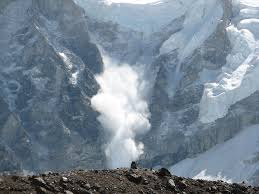
Three Army personnel, including two Agniveers, lost their lives recently in a major avalanche at the Siachen base camp in Ladakh.
- An avalanche is a large amount of snow that quickly moves down a slope.
- An avalanche can be deadly because it will bury or sweep away anything in its path.
- Large amounts of sliding rocks, earth, or other materials may also be called avalanches. But these are often known as landslides.
- Many different conditions make an avalanche possible.
- An avalanche is more likely to happen on a slope without trees or large rocks.
- These things help to keep snow in place.
- A weak layer of snow also makes an avalanche likely.
- Once the conditions are right, several things can start an avalanche.
- Heavy snowfall, strong wind, and rising temperatures all can loosen snow on a slope.
- Falling rocks or ice also can cause snow to slide.
- Even the movement of a skier, a snowboarder, or a snowmobile can trigger an avalanche.
- There are two main types of snow avalanches—sluffs and slabs.
- Sluff avalanches occur when the weak layer of a snowpack is on the top.
- A sluff is a small slide of dry, powdery snow that moves as a formless mass.
- Sluffs are much less dangerous than slab avalanches.
- A slab avalanche occurs when the weak layer lies lower down in a snowpack.
- This layer is covered with other layers of compressed snow.
- When the avalanche is triggered, the weak layer breaks off, pulling all the layers on top of it down the slope.
- These layers tumble and fall in a giant block, or slab.
- Avalanches vary in destructive power from harmless to large enough to destroy mature forests or flatten villages.
- When an avalanche stops, the snow becomes solid like concrete, and people are unable to dig out.
- People caught in avalanches can die from suffocation, trauma, or hypothermia.
- People in mountainous areas protect themselves from avalanches in several ways.
- Special fences help to hold snow in place.Barriers help to stop sliding snow or change its direction.
- Explosives help to clear snow from place where avalanches are likely to occur.
Innovations for Defence Excellence:

The Innovations for Defence Excellence – Defence Innovation Organisation has inked an MoU with EdCIL (India) Limited to foster the development of dual-use cutting-edge technologies , driven by the new ASPIRE (Accelerating Strategic Progress in Research and Education) program.
- Innovations for Defence Excellence is the flagship initiative launched in 2018 by the Ministry of Defence, Government of India.
- The objective of the scheme is to cultivate an innovation ecosystem in the Defence and Aerospace sector by collaborating with startups, innovators, MSMEs, incubators, and academia.
- It will be funded and managed by a ‘Defence Innovation Organization (DIO)’
- Defence Innovation Organization has been formed as a ‘not for profit’ company as per the Companies Act 2013 for this purpose, by the two founder members. Defence Public Sector Undertakings (DPSUs) Hindustan Aeronautics Limited (HAL) and Bharat Electronics Limited (BEL).
- iDEX functions as the executive arm of DIO, carrying out all the required activities while DIO provides high level policy guidance to iDEX.
- It offers grants and support for R&D with significant potential for future adoption in Indian defence and aerospace
- It is currently engaged with over 650 start-ups and MSMEs.
Bhil Tribe:

A translated collection of folk tales of the Bhil tribe in Madhya Pradesh will be made available on the Ministry of Tribal Affairs’ Adi Vaani website and the app.
- Bhils are considered as one of the oldest tribes in India and identified as one of the Dravidian racial tribes of Western India and belong to the Australoid group of tribes.
- They are the most widely distributed tribal groups in India.
- The name ‘Bhil’ is derived from the word villu or billu, which according to the Dravidian language is known as Bow.
- They are mainly divided into two main groups: the central and eastern or Rajput Bhils.
- The central Bhils are found in the mountain regions in the Indian states of Madhya Pradesh, Maharashtra, Gujarat and Rajasthan.
- Bhils are also found in the north eastern parts of Tripura.
- Nearly all of the Bhil engage in agriculture, some using the slash-and-burn (jhum) method but most employing the plow.
- They speak Bhili (blend of Gujarati and Marathi), which is an Indo Aryan language.
- Almost all Bhils practice ethnic religions that have been highly influenced by Hinduism.
- Most of them worship local deities like Khandoba, Kanhoba, Bahiroba, and Sitalmata.
- Some worship the Tiger God called ‘vaghdev’.
- The Baneshwar fair is the main festival celebrated among the Bhils.
- This fair is held during the period of Shivratri and is dedicated to Baneshwar Mahadev also known as Lord Shiva.
Universal Postal Congress:
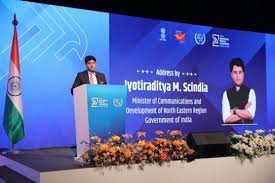
The 28th Universal Postal Congress, the supreme decision-making body of the Universal Postal Union (UPU), opened recently.
- Universal Postal Congress is a United Nations specialized agency and the postal sector’s primary forum for international cooperation.
- It was established by the Treaty of Bern of 1874.
- It is the second oldest international organization worldwide.
- It coordinates postal policies among member nations in addition to the worldwide postal system.
- It sets the rules for international mail exchanges and makes recommendations to stimulate growth in mail, parcel and financial services volumes and improve the quality of service for customers.
- It consists of four bodies,
- The Congress: It is the supreme authority of the UPU and meets every four years.
- The Council of Administration: It ensures the continuity of the UPU’s work between Congresses, supervises its activities and studies regulatory, administrative, legislative and legal issues.
- The Postal Operations Council: It is the technical and operational mind of the UPU and consists of 48 member countries elected during Congress.
- The International Bureau: Fulfilling a secretariat function, the International Bureau provides logistical and technical support to the UPU’s bodies.
- Any member country of the United Nations may become a member of the UPU.
- Any non-member country of the United Nations may become a UPU member, provided that its request is approved by at least two-thirds of the member countries of the UPU.
- Member countries: At present it consists of 192 member countries.
- Headquarters: Bern, Switzerland.
Exercise ZAPAD:
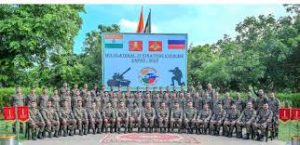
An Indian Armed Forces contingent departed for the Mulino Training Ground, Nizhniy, Russia, to participate in the exercise ZAPAD 2025.
- Exercise ZAPAD is a multilateral joint military exercise.
- The Indian contingent consists of 65 personnel, including 57 from the Army, seven from the Air Force and one from the Navy.
- This exercise is aimed at enhancing military cooperation, improving interoperability, and providing a platform for participating armies to exchange tactics, techniques and procedures in the domains of conventional warfare and counter-terrorism operations.
- It will focus on joint company level operations in open and plain terrain, wherein troops will undertake missions ranging from joint planning, tactical drills, and special arms skills.
- It will offer a valuable opportunity to hone joint operational capabilities, integrate emerging technologies, and operate in a multinational combat environment.
- It will further strengthen defence cooperation and foster camaraderie between India and Russia, thereby reinforcing the spirit of collaboration and mutual trust.
International Conference on Space 2025:

India inaugurated the International Conference on Space 2025, highlighting the country’s ambitious space goals, its evolving space strategy, and its future role in global space exploration.
- Theme: Harnessing Space for Global Progress: Innovation, Policy, and Growth.
- India’s Major Space Ambitions
- To establish a Bharatiya Space Station by 2035 and send an Indian astronaut to the Moon by 2040.
- Future exploration missions to Mars, Venus, and asteroids are part of the roadmap.
- The Gaganyaan human spaceflight programmme is being developed as a priority.
- India’s international collaborations include the NASA-ISRO NISAR mission with the United States and the upcoming Chandrayaan-5 mission with Japan, showcasing space as a platform for global engagement.
Multi-Stage Malaria Vaccine AdFalciVax:
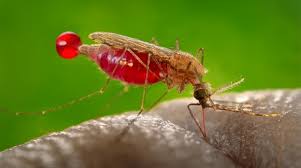
The Union government has granted licences to five Indian firms to manufacture and commercialise AdFalciVax, the country’s first indigenous multi-stage malaria vaccine developed by ICMR.
- It is India’s first indigenous recombinant chimeric multi-stage malaria vaccine designed to block infection and transmission of Plasmodium falciparum, the deadliest malaria parasite.
- Developed by ICMR–Regional Medical Research Centre (RMRC), Bhubaneswar, with support from ICMR–National Institute of Malaria Research (NIMR) and National Institute of Immunology (NII), New Delhi.
- Aim is to prevent infection in individuals and minimise community transmission of malaria, thereby aiding elimination goals.
Grand Ethiopian Renaissance Dam : Inauguration
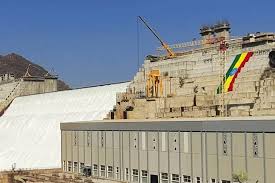
Ethiopia inaugurated the Grand Ethiopian Renaissance Dam (GERD), Africa’s largest hydroelectric project, hailing it as a “great achievement,” even as Egypt lodged a protest at the UN, calling it an existential threat to its water security.
- Grand Ethiopian Renaissance Dam (GERD) is Africa’s largest hydroelectric project, a megadam built for power generation and regional energy trade.
- A unifying national project for Ethiopia, though geopolitically contested.
- Constructed on the Blue Nile River, about 30 km upstream from Sudan, in Guba, Ethiopia.
- Blue Nile contributes ~85% of Nile waters, making it geopolitically sensitive.
- Ethiopia initiated the project in 2011, seeing it as a symbol of self-reliance, development, and regional influence.
Lankhong Puja:
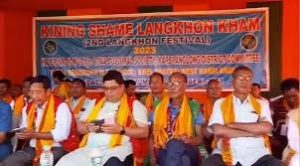
The Tiwa tribe of Assam recently celebrated their traditional Lankhong Puja, a socio-religious festival where prayers are offered for a good harvest in the upcoming Rabi season.
- Lankhong Puja is a traditional socio-religious festival of the Tiwa community.
- Celebrated by: The Tiwa (Lalung) tribe of Assam.
- Reason is to invoke blessings for a prosperous Rabi crop season and ensure good agricultural yield.
- Tiwa Tribe are an important tribal group of Assam, formerly known as Lalung, belonging to the Mongoloid ethnic group.
- Linguistically part of the Tibeto-Burman family, with close ties to Bodo-Naga tribes.
- Reside mainly in Nagaon, Morigaon, Dhemaji, Dibrugarh, Jorhat, Titabor (Assam), as well as parts of Meghalaya and Tripura.
- Settlements are divided into hill Tiwas and plain Tiwas, with distinct lifestyles influenced by geography and neighboring communities.
Nepal’s President Ram Chandra Paudel has appealed for peaceful dialogue:
Nepal’s President Ram Chandra Paudel has appealed for peaceful dialogue amid the ongoing Gen-Z protests triggered by political unrest following PM K.P. Sharma Oli’s resignation.Nepal is a landlocked Himalayan country in South Asia, known for its unique cultural and geographical diversity.
Capital: Kathmandu. Neighbouring Nations: Bordered by India (east, south, west) and China (north).
Gen-Z Protest in Nepal:
- A mass youth-led uprising, largely by Generation Z, demanding accountability, transparency, and democratic freedoms.
- Reasons for Protest: Government’s ban on 26 social media platforms (Facebook, Instagram, WhatsApp, YouTube) citing tax and cybersecurity concerns.
- Rising frustration with corruption, nepotism, and lack of governance transparency.
Dr. Geetha Vani Rayasam Takes Over as NIScPR Director:
Dr. Geetha Vani Rayasam has officially taken charge as the Director of CSIR–National Institute of Science Communication and Policy Research (NIScPR) on September 9, 2025. In her inaugural address, she emphasized a future-ready vision for science communication, agile Science, Technology and Innovation (STI) policies, and global partnerships to strengthen India’s role in the knowledge economy.Dr. Rayasam highlighted that in the era of Artificial Intelligence, digital platforms, and rapid global shifts, India’s STI ecosystem must adapt quickly. She called for flexible, responsive policies that evolve with the times and position NIScPR as a policy thought leader for both India and the Global South.
Himachal Pradesh Declared ‘Fully Literate’ State:
The declaration was made on the occasion of International Literacy Day on 8th September, under the ULLAS program. Himachal Pradesh has become the fourth state to achieve full functional literacy, joining Tripura, Mizoram, and Goa in this significant milestone. In June 2024, Ladakh was declared the first Union Territory to be fully literate. Himachal Pradesh literacy rate has reached 99.30%, exceeding the national benchmark of 95%, which the Ministry of Education considers equivalent to full literacy(100%). ULLAS (Understanding Lifelong Learning for All in Society) Nav Bharat Saaksharta Karyakram, is a centrally sponsored scheme being implemented from 2022 to 2027. It is also known as the New India Literacy Programme (NILP) targets non-literate adults aged 15 and above. It aims to provide literacy, digital literacy, and critical life skills such as financial literacy.
IEPFA Celebrates 9th Foundation Day with National Round Table:
The Investor Education and Protection Fund Authority (IEPFA), under the Ministry of Corporate Affairs, celebrated its 9th Foundation Day on September 8, 2025, in New Delhi. The event featured a Round Table Conference on the theme “Claiming the Unclaimed: Unlocking the Potential of Idle Financial Assets in India”, highlighting reforms to improve claim processes, protect investors, and boost financial inclusion.
U.K. India Infrastructure Financing Bridge (UKIIFB):
The U.K. India Infrastructure Financing Bridge (UKIIFB), launched in September 2024, marked its first anniversary with a report in London recommending policy changes to de-risk investments in India’s infrastructure sector.A bilateral initiative between India and the U.K. to mobilise global private capital for India’s sustainable infrastructure projects. Launched in: September 2024 during the India–UK Economic and Financial Dialogue. Organisations Involved: NITI Aayog (lead institution) and City of London Corporation (lead institution).
PM Modi Announces ₹1,600 Crore Relief for Flood‑Hit Punjab:
Devastating floods and cloudbursts across Punjab, Prime Minister Narendra Modi conducted an aerial survey of the affected regions and chaired a high-level review meeting in Gurdaspur. Following the assessment, he announced a significant financial assistance package of ₹1,600 crore, further strengthening the state’s ongoing relief and rehabilitation efforts. This central aid is in addition to ₹12,000 crore already allocated to Punjab, aimed at ensuring swift and structured recovery.




